Kingston HyperX 3K (240GB) SSD Review
by Anand Lal Shimpi on April 10, 2012 3:00 AM ESTRandom Read/Write Speed
The four corners of SSD performance are as follows: random read, random write, sequential read and sequential write speed. Random accesses are generally small in size, while sequential accesses tend to be larger and thus we have the four Iometer tests we use in all of our reviews.
Our first test writes 4KB in a completely random pattern over an 8GB space of the drive to simulate the sort of random access that you'd see on an OS drive (even this is more stressful than a normal desktop user would see). I perform three concurrent IOs and run the test for 3 minutes. The results reported are in average MB/s over the entire time. We use both standard pseudo randomly generated data for each write as well as fully random data to show you both the maximum and minimum performance offered by SandForce based drives in these tests. The average performance of SF drives will likely be somewhere in between the two values for each drive you see in the graphs. For an understanding of why this matters, read our original SandForce article.
Many of you have asked for random write performance at higher queue depths. What I have below is our 4KB random write test performed at a queue depth of 32 instead of 3. While the vast majority of desktop usage models experience queue depths of 0 - 5, higher depths are possible in heavy I/O (and multi-user) workloads:
Sequential Read/Write Speed
To measure sequential performance I ran a 1 minute long 128KB sequential test over the entire span of the drive at a queue depth of 1. The results reported are in average MB/s over the entire test length.
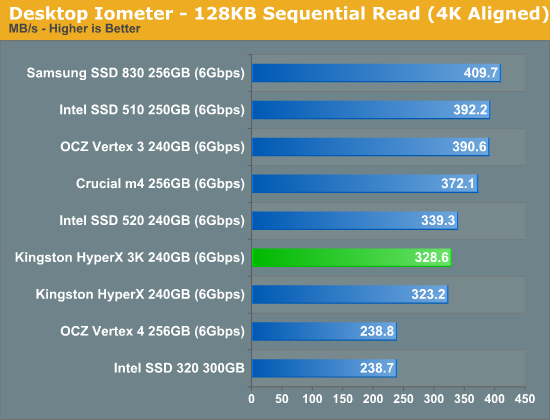
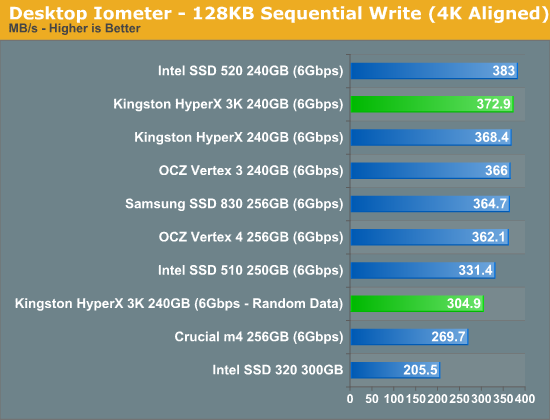
AS-SSD Incompressible Sequential Performance
The AS-SSD sequential benchmark uses incompressible data for all of its transfers. The result is a pretty big reduction in sequential write speed on SandForce based controllers.
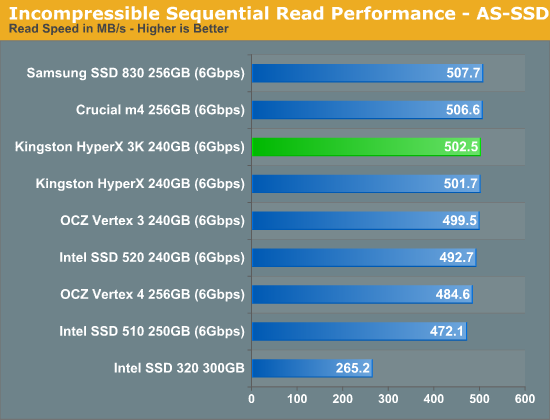
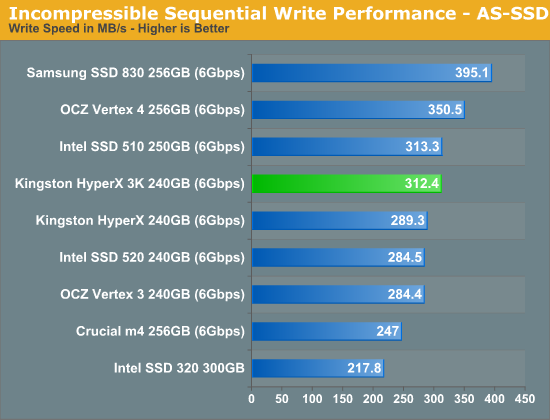


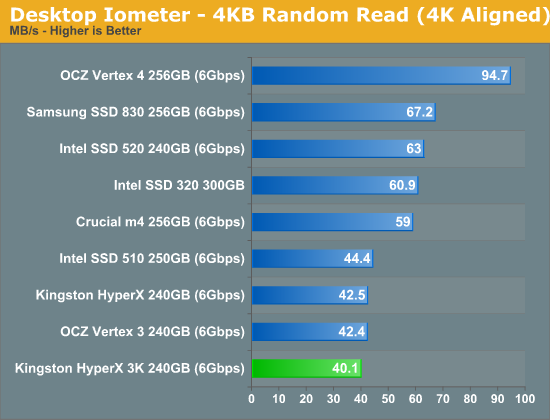

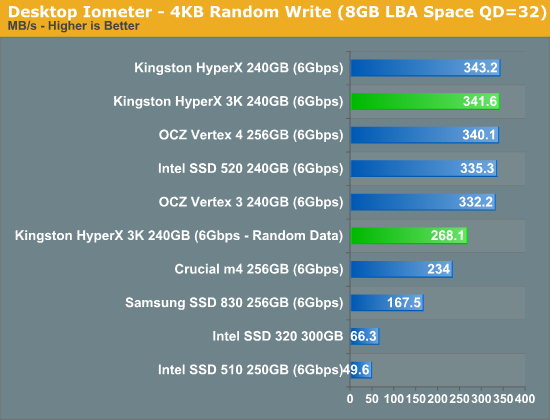








44 Comments
View All Comments
Coup27 - Tuesday, April 10, 2012 - link
I've had this issue across multiple platforms though. W7 with IE9 and FF11. XP with IE8, and now my work machine which is W7 with IE9. I regularly run CCleaner so I really don't think it's been my end, sorry.InsaneScientist - Tuesday, April 10, 2012 - link
I'm not a web programmer, so I can't help much with why it's happening, but, for what it's worth, I had some extra time so I tried to reproduce your problem.I tried every browser/os combination available to me at my house, which would be:
Windows 8 CP x86 (to go) with IE10, Chrome 18, & FF 11
Windows 8 CP x64 with IE10, IE10x64, Chrome 18, FF11, FF Aurora 13, & Safari 5.1.5
Windows 7 x86 with IE9, Chrome 18, FF 11
Windows 7 x64 with IE9, Chrome 18, FF 11, Safari 5.1.5
Windows Vista x86 with IE9, Chrome 18, & FF 11
Windows XP x86 (Virtual Machine) with IE8 and FF11
Windows Thin PC x86 with IE9 & FF 11
Safari in iOS 4.2 and 5.1
The stock browser in Android 2.3.7 and 4.0.4
I couldn't reproduce the problem at all... So it's definitely not something inherent to the website, because it works for some people and doesn't work for others... but I'm at a loss as to what that could be. It also doesn't seem like it's unique to you though (as seen in the comment below yours. Very strange...
bji - Tuesday, April 10, 2012 - link
It's an intermittent problem; just because you couldn't reproduce it the time or times that you tried, doesn't mean that it's not inherent in the site. Unless by inherent you mean "happens every time", but we already established that that is not the case.The server(s) that serve up some part of the content of the site are occasionally generating something bad. Maybe there are multiple web servers behind a load balancer and one of them as a corrupted style sheet page or something that is occasionally being handed out?
bji - Tuesday, April 10, 2012 - link
That's EXACTLY what I was seeing occasionally.Something is busted on your site; don't blame it on our browsers.
AssBall - Tuesday, April 10, 2012 - link
An intermittent problem that you have and can't reproduce or analyze. I blame the user, not Anandtech or your browser.Coup27 - Wednesday, April 11, 2012 - link
So I turn on my machine, load AT, and it does that? And thats somehow "the user"?Well done.
bji - Wednesday, April 11, 2012 - link
If it were just me, maybe that would be true. But multiple people have reported the exact same symptoms.Jaraxal - Tuesday, April 10, 2012 - link
I'd suggest a small modification to alert readers that they've reach the end of the article. As it is, it definitely appears as though it's missing "something" when the article just ends with a chart.KZ0 - Tuesday, April 10, 2012 - link
I love it. Keep up the good work!aguilpa1 - Tuesday, April 10, 2012 - link
That's cool but if there was a,... and in overview and conclusion notation (at the beginning) with a read next few pages for results of testing, information and benchmarks,... noted somewhere it would make more sense, don't ya think?